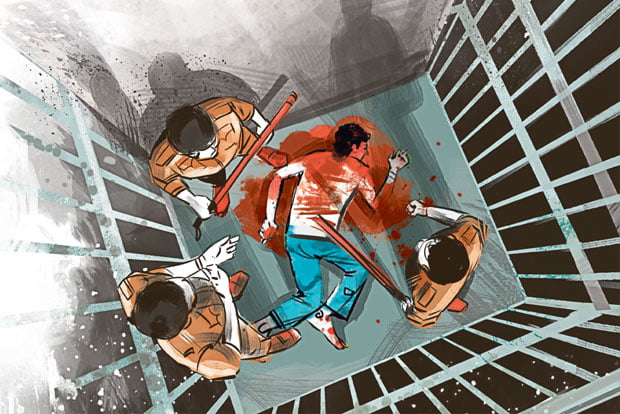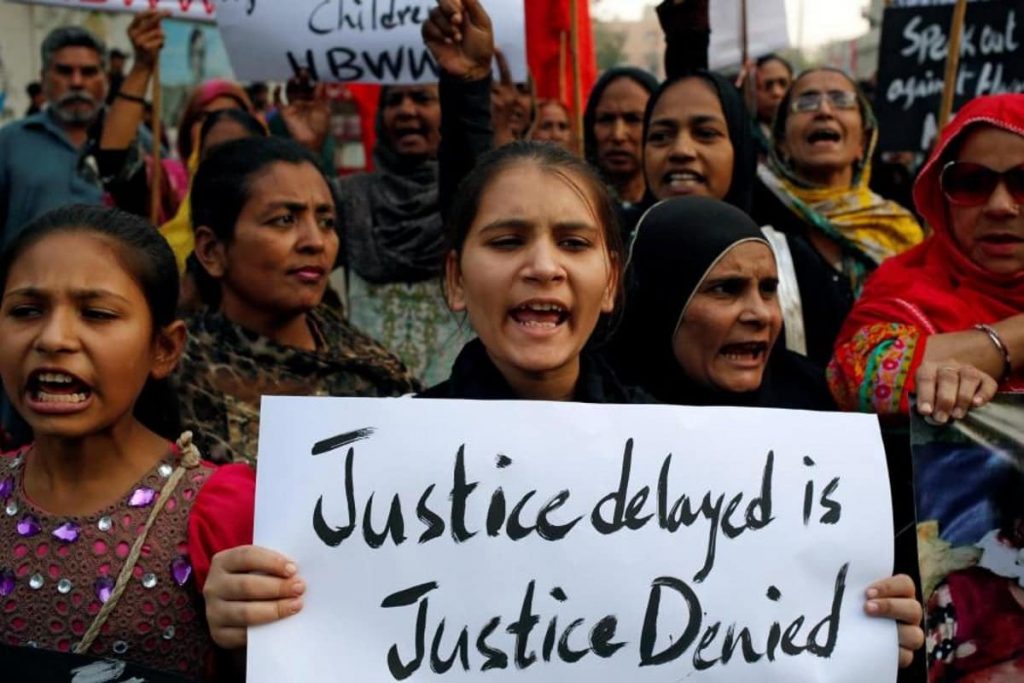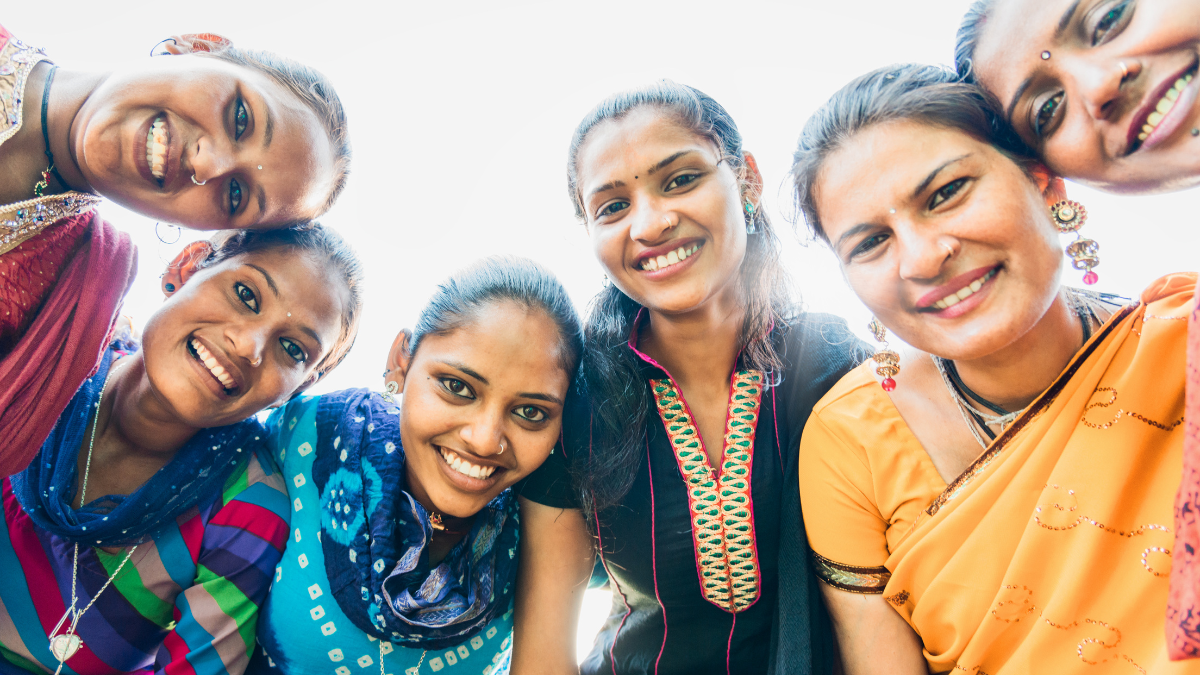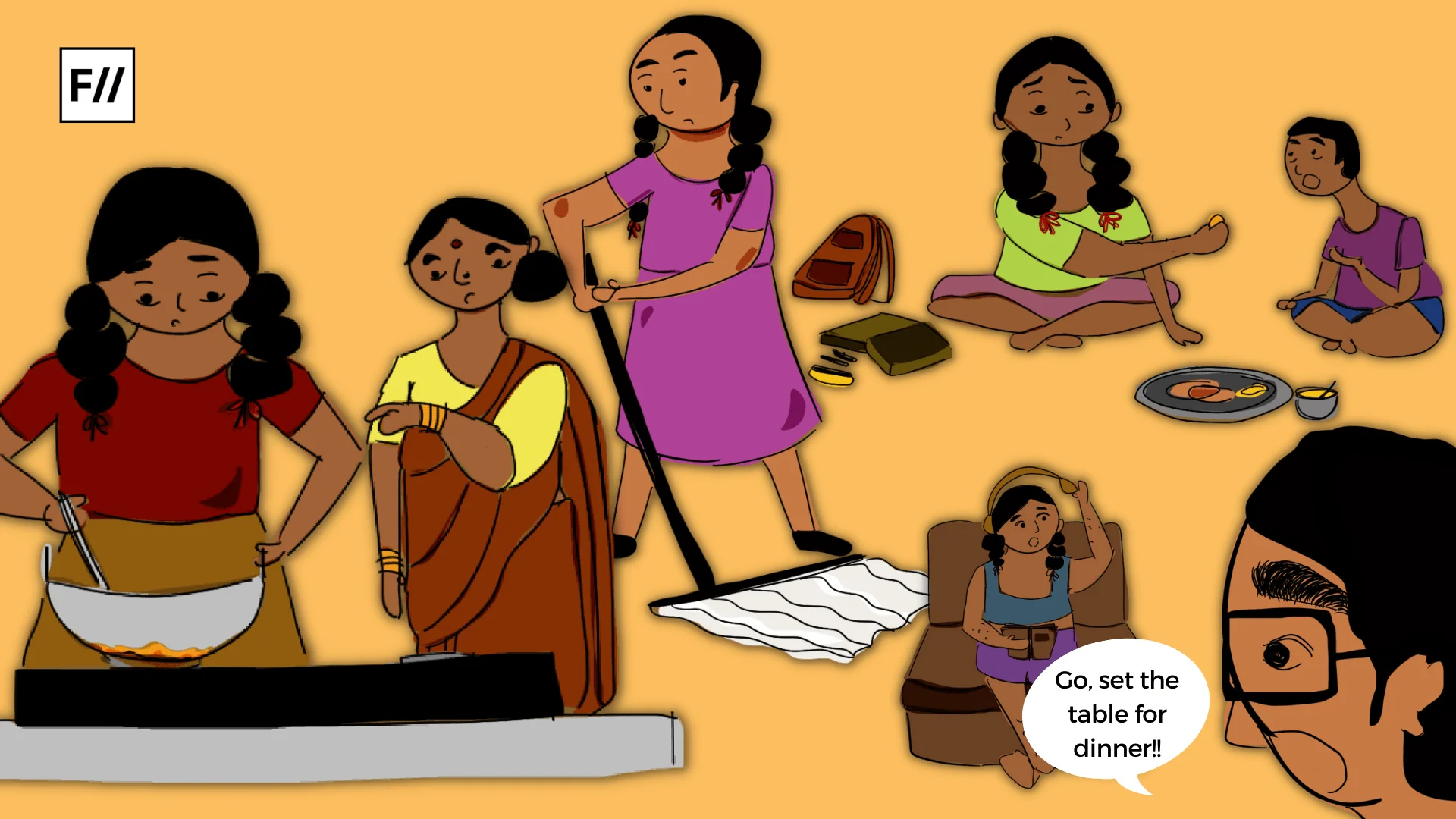Trigger Warning: Mentions of Sexual Violence, Rape, Torture, Custodial Killings, Injustice in Criminal Law
Just during the time of the release of the New Education Policy, and a problematic draft of the Environmental Impact Assessment, the Ministry of Home Affairs, had constituted a committee—first announced in December 2019, later started functioning from the month of July 2020—consisting of five male legal academicians at the National Law University, Delhi, for the purpose of looking into reforms specifically pertaining to the Criminal Law System.

The main reason behind this has been cited as ‘to ascertain ways of improving the current aspects of criminal law such that the constitutional values of justice and dignity are upheld to their highest level and that the outdated colonial as well as paternalistic outlook of the laws can be eliminated.’ However, why we must be wary of this controversial move is not just because of the lack of diversity within the reform panel or how it is mostly Delhi-based, but also because of the fact that its time period of study falls in the midst of a pandemic. Thus, making its provisions and claims for an online mode of consultations from the public as well as law experts highly exclusive and inaccessible, which further deters the reaching of a broad-based, well-informed consensus difficult, especially when something as serious and important as the ‘criminal law reformation’ is concerned.
Why we must be wary of this controversial move is not just because of the lack of diversity within the reform panel or how it is mostly Delhi-based, but also because of the fact that its time period of study falls in the midst of a pandemic. Thus, making its provisions and claims for an online mode of consultations from the public as well as law experts highly exclusive and inaccessible.
The mandate of the committee mainly concerns updating and modernising aspects of the three main statutes of criminal law namely, ‘The Indian Penal Code, 1860 (Substantive Criminal Law)’, ‘Criminal Procedure Code, 1973 (Procedural Criminal Law)’ and the ‘Indian Evidence Act, 1872 (Law of Evidence)’. However, an important segment of the IPC which very severely affects the Criminal Justice System in India, that is, ‘Torture’, has been excluded as an agenda of the Reforms Committee. By not paying heed to this important component, the committee in the very first does grave injustice to those on the receiving end of custodial torture.

Torture, Police Brutality and Mass Incarceration
Various forms and elements of physical torture that are employed by public office holders in police or judicial custody against those under legal/illegal detention remain unaddressed in India and hence, there is very little discourse in the political domain about such grievous forms of custodial violence, many a time leading to the death of the accused. Substantive laws in the Indian Penal Code do not adequately criminalise offences of torture committed by those very functionaries of law (such as the police) who are expected to be the ‘protectors of the citizens as well as the law.’ The IPC also does not define or encompass provisions for ‘mental harassment/torture’ at the hands of the authorities.
The most recent case of custodial killings of a father-son duo that followed the killing of George Floyd in the US did ‘selectively’ spark the political consciousness against police brutality; however, there are several hundred who still continue to face custodial torture such as rape, whose voices never reach the mainstream media. In 2019, the Jammu Kashmir Coalition of Civil Society published a detailed report citing the massive use of torture in detention centres in the state of Jammu and Kashmir. By not paying heed to an important component such as ‘Torture’, the committee in the very first does grave injustice to those on its receiving end.
An important aspect of the due process of law provides the provision for bail, and only in extreme cases is incarceration mandated, that too with admissible evidence. The landmark judgement of the ‘Hussainara Khatoon v. State of Bihar’ case had brought to light the plight of hundreds of undertrials in Bihar back in 1979; however, the current status quo of an extremely slow and ill-equipped criminal law machinery reflects no change even after forty years.
Mass incarceration of undertrials, mostly those who belong to marginalised identities is still prevalent. As per data available till 2015, out of 4,19,623 persons in jail in India, 17,834 are women. Lack of awareness of free legal aid that the socially and economically marginalised identities are entitled to as per the Legal Services Authorities Act, 1987 (as required by Article 39A) and the lack of interest invested by lawyers in such pro bono cases tends to maintain this status quo.
Mass incarceration of undertrials, mostly those who belong to marginalised identities is still prevalent. As per data available till 2015, out of 4,19,623 persons in jail in India, 17,834 are women. Lack of awareness of free legal aid that the socially and economically marginalised identities are entitled to as per the Legal Services Authorities Act, 1987 (as required by Article 39A) and the lack of interest invested by lawyers in such pro bono cases tends to maintain this status quo. Such unequal access to legal aid hence defeats the right to equal justice.
If at all the committee deems it necessary to prioritise the lived experiences of the marginalised in India, it should recommend a check over police excesses and abuse of power by strengthening the due process of law, the rights of the accused (DK Basu v. State of West Bengal), and also take into consideration a well-structured mechanism awarding compensation for custodial deaths, wrongful incarcerations, cases of rape (Tukaram and Another v. State of Maharashtra) and other forms of torture in custody.
Representation Of Marginalised Communities
Another important dimension of the criminal justice system that requires attention is the measure of the criminality of the crime and the subsequent level of impunity/restoration attached to it—once an accused is proven guilty—by taking into account questionable forms of Retributive Justice measures such as the death penalty, as opposed to Restorative Justice. But somehow, these dimensions do not seem to fall as a priority under the mandate of the committee.
The complete exclusion of marginalised identities (Dalits, women, religious and regional minorities, the LGBTQIA+ community) from a reform panel that claims to eliminate outdated laws that date back to the colonial period forms another point of critique and scrutiny against it, making its composition seriously questionable. Neither are any practising lawyers a part of the said committee, and as a result, several ex-judges and lawyers have raised concerns over this.
The complete exclusion of marginalised identities (Dalits, women, religious and regional minorities, the LGBTQIA+ community) from a reform panel that claims to eliminate outdated laws that date back to the colonial period forms another point of critique and scrutiny against it, making its composition seriously questionable. Neither are any practising lawyers a part of the said committee, and as a result, several ex-judges and lawyers have raised concerns over this.
Since the committee has mandated that it would be reviewing serious offences such as mob lynchings, honour killings and marital rape; lack of representation and diversity in the panel reflects its redundancy. Given that the Judiciary and law have at several instances had a paternalistic approach towards survivors of sexual violence (such as rape), an all-male reform panel claiming to suggest reforms from a non-patriarchal perspective seems like a far-fetched expectation.
About 99.1% of cases of sexual violence against women go unreported and those that are reported receive hostility from the state and society. The true test of a criminal justice system lies in its ability to be more accessible and less hostile towards women and other marginalised identities, providing them with legal aid at every step of the due process.
Ambiguity In Research For Reforms
Another rather important critique raised with respect to the committee concerns the ambiguity of the methodology adopted by it. It released a questionnaire for the public and other stakeholders such as lawyers for the sole purpose of consultations. However, many have argued that the contents of the questionnaire should have been compiled after thorough, engaging public debates on the possible dimensions of the Criminal Laws that require reformation.

In India, the gap between a ‘formal declaration of laws as well as rights’ and their realisation and functioning on ground is so huge that this severely disjunctures the idea of speedy justice both for the illegal detainees as well as victims. Moreover, the everyday mob lynchings, extrajudicial killings by the state machinery as seen in the Hyderabad rape case as well as misogynistic threats being perpetrated in case of the Rhea Chakraborty’s media trial reveal the quest for ‘vigilante justice’ that stands normalised at its highest point in India, significantly because of the absence of a well-forced, law obeying and functional criminal justice machinery.
A Criminal Justice System that functions in such a demographic where excruciatingly high levels of social and economic disparities and political repression form an important dimension affecting the act, intention or criminality of the crime, while also affecting the ensuing battle for the determination of equal justice; devising a comprehensive reformation plan for such a system within a small time window of six monthsas opposed to earlier reports by law commissions and committees that have been released only after an extensive study of usually two to three years— becomes unimaginable.
The current State—like its predecessors—has set numerous precedents for the repression of several political voices. And has now ironically constituted a Criminal Law Reform Committee at a time when Anti-Terror laws such as the UAPA are being misused by it (especially under the Home Ministry) to curtail dissent and deny individual liberty—as granted by Articles 14, 19, 21 of the Indian Constitution—to the many political prisoners (including Political Activists, Professors, Students) who stand wrongly incarcerated.
Thus, the political consciousness needs to be wary of the intention behind such hasty moves of the state that in return have amplified effects on individual liberty in the name of a false idea of ‘national security’.
References
- Access to Criminal Justice: Challenges and Prospects by Justice S. Muralidhar, Towards Legal Literacy
- Laws relating to Criminal Justice Administration by B.B. Pande, Towards Legal Literacy
- Chapter Two (Maneka Gandhi v. State of India, 1978) and Seven (Nilabati Behera v. State of Orissa, 1993), 10 Judgements that Changed India by Zia Mody
Featured Image by: Sameer Sehgal, Hindutan Times
About the author(s)
Nidhi is an undergraduate student, pursuing English Literature and Political Science from St. Stephen's College. She is someone who's trying to understand the ways in which intersectionality and feminist politics have been shaping her evolving thoughts and ideas. Her new found interests include reading Urdu Poetry, listening to folk music and blogging.




